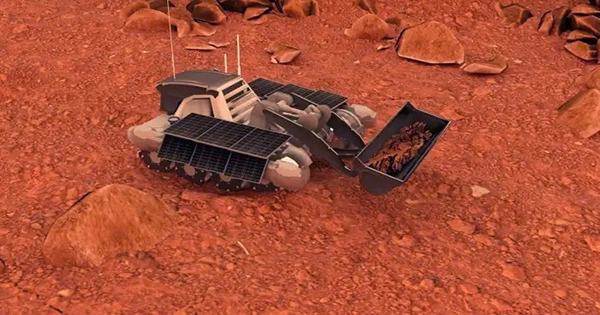Utilizing resources that are already present on the moon, planet, or asteroids that you are visiting rather than transporting large quantities of supplies from Earth is one of the objectives of space exploration. Many scientists are attempting to figure out how to make materials on Mars, and a recent study has discovered a way to make a titanium alloy using martian regolith, the planet’s dirt.
According to a publication in the International Journal of Applied Ceramic Technology, the researchers blended the regolith with a titanium-aluminum-vanadium alloy as well as employed the regolith by itself to make ceramics. The team was particularly interested in determining whether or not adding a simulated Martian soil to this alloy, which is recognized for its strength and resistance to corrosion, would make a difference.
Regolith ceramics weren’t precisely a success when they were tried to be. While not effective as a building material, they tend to crack when they cool down. However, they can be used as a covering that provides protection from oxidation (rust) and may even suppress radiation. Because Mars lacks a magnetic field, it is less shielded from cosmic rays and solar wind. On Mars, this leads to some unusual aurorae.
Regolith, however, can be used to create a fairly robust material. The scientists found that adding a little amount of regolith (5%) to the titanium alloy significantly improved the material’s characteristics and made it lighter.
According to corresponding author Amit Bandyopadhyay of Washington State University, “it provides you a better, greater strength and hardness material, so that can perform much better in specific applications.”
The alloy was melted to a temperature of more than 2,000°C (3,632°F) before the scientists added the simulated soil to create a 3D printed combination. The mixture was then applied to a moving platform, which enabled the researchers to print objects with particular dimensions and geometries.
The method still needs a lot of material to be transported from Earth, but as the team notes, it is a beginning. Future research may be able to develop composite materials that are even better and use 3D printing methods that are even more effective.
This proves that it is feasible, and perhaps we ought to consider in this direction, said Bandyopadhyay. “It’s not just producing plastic parts, which are weak, but metal-ceramic composite parts, which are strong and can be used for any sort of structural elements.
There are other ways to use Martian regolith besides this one. Others have discovered a way to combine it with blood or urine to create strong bricks.
















